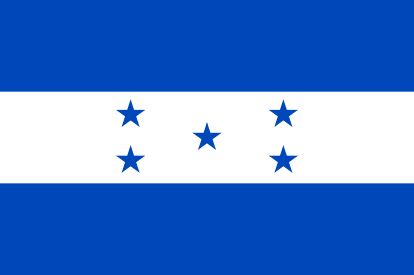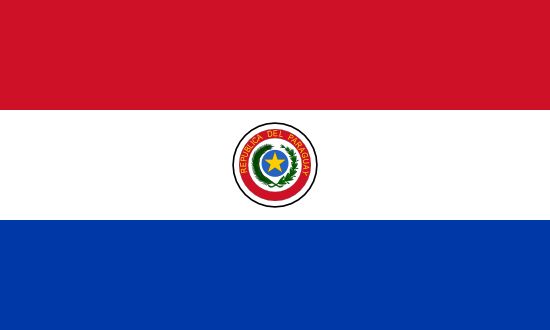

Interrogator for Fiber Bragg Grating Distributed Sensing Arrays (EN578-20ISC3/59)
Process Number PW-21-00971948
Dates:
2021-11-04 00:00:00
Amendment date:None
Date closing:2021/12/16 14:00 Eastern Standard Time (EST)
Details:
Canada
Public Works and Government Services Canada
Public Works and Government Services Canada
Canada
Solely Canadian content
PW-21-00971948
EN578-20ISC3/59
Description:
*Please note the ISC Website will be available on November 4, 2021 at 14:00 EDT NEW - Vaccination Policy Notification 152 in place. See attachment and/or go to (COVID-19 vaccination requirement for supplier personnel) on Buy and Sell. This Challenge Notice is issued under the Innovative Solutions Canada Program (ISC) Call for Proposals 003 (EN578-20ISC3). For general ISC information, Bidders can visit the ISC website. Please refer to the Solicitation Documents which contain the process for submitting a proposal. Steps to apply: Step 1: read this challenge Step 2: read the Call for Proposals Step 3: propose your solution here Challenge title: Interrogator for Fiber Bragg Grating Distributed Sensing Arrays Challenge sponsor: National Research Council of Canada (NRC) Funding Mechanism: Contract MAXIMUM CONTRACT VALUE: Multiple contracts could result from this Challenge. Phase 1: The maximum funding available for any Phase 1 contract resulting from this Challenge is : $150,000.00 CAD excluding applicable taxes, shipping, travel and living expenses, as required. The maximum duration for any Phase 1 contract resulting from this Challenge is up to 6 months (excluding submission of the final report). Estimated number of Phase 1 contracts: 2 Phase 2: Note: Only eligible businesses that have successfully completed Phase 1 will be invited to submit a proposal for Phase 2. The maximum funding available for any Phase 2 contract resulting from this Challenge is : $1,000,000.00 CAD excluding applicable taxes, shipping, travel and living expenses, as required. The maximum duration for any Phase 2 contract resulting from this Challenge is up to 24 months (excluding submission of the final report). Estimated number of Phase 2 contracts: 1 This disclosure is made in good faith and does not commit Canada to award any contract for the total approximate funding. Final decisions on the number of Phase 1 and Phase 2 awards will be made by Canada on the basis of factors such as evaluation results, departmental priorities and availability of funds. Canada reserves the right to make partial awards and to negotiate project scope changes. Note: Selected companies are eligible to receive one contract per phase per challenge. Travel Kick-off meeting A project kick-off meeting will be conducted by video conference or teleconference. Progress review meeting(s) Progress review meetings will be conducted by videoconference or teleconference. Final review meeting Virtual meeting - A final review meeting will be conducted virtually, via videoconference or teleconference. Problem statement The National Research Council’s (NRC’s) Security and Disruptive Technologies (SDT) Research Centre hosts a number research teams exploring the fundamentals and applications of ultrafast quantum optics, quantum photonics and fiber optics. Over the past decade, the Fibre Photonics team within SDT have developed state-of-the-art ultrafast laser inscription of FBG technology that can be used for sensing in extreme environments (high temperatures, pressures and ionizing conditions). Methods and techniques developed by the team remove several key processing steps in traditional FBG manufacturing which enables the fabrication of quasi-distributed FBG sensor arrays with potentially hundreds to thousands of FBG sensors on a given fiber. These techniques have been transferred to Canadian industry through licensing. There is a wide range of applications of such sensor arrays including structural health monitoring of civil structures (bridges, hydro-electric dams, wind turbines etc.), energy production and environmental monitoring (oil pipelines, gas turbines), green technologies (electric vehicle battery performance), that cannot be cost-effectively addressed using existing technology. An important limitation of this new quasi-distributed sensing technology is that traditional FBG sensor interrogation methods are limited in the number of sensing elements that can be measured. Cost competitive equipment that can measure up to thousands of sensors is required in order to unleash the full potential of the ultrafast laser inscription intellectual property developed by NRC. However, none is commercially available. In this challenge, the NRC is seeking the demonstration of a data acquisition system (interrogator) with the ability to interrogate both spectrally and spatially hundreds if not thousands of FBG sensing elements that are present on distributed fiber optic sensing array on a single optical fiber. Desired outcomes and considerations Essential (mandatory) outcomes The proposed solution must: 1. Have the dual capability of discriminating an individual FBG reflection wavelength from other FBGs (wavelength division multiplexing – WDM) as well determining the FBG location via time-of-flight measurements (time division multiplexing-TDM) 2. Wavelength range in the telecom C-band (1528 to 1568 nm) 3. Output power: > 13 dBm 4. Laser linewidth: < 10 MHz 5. Wavelength accuracy: < ± 5pm 6. Wavelength tuning repeatability: < ± 5 pm 7. Laser tuning step resolution: 8 pm 8. Output channels: at least 16 9. Input channels (return fibers): at least 16 10. Laser scanning rate: 1 Hz to 200 kHz 11. Laser optical interface: FC/APC 12. Self-calibrated wavelength with internal reference 13. Have ethernet or WiFi communication interfaces Additional outcomes The proposed solution should: 1. Interrogate up to 1000 FBGs in a single fiber strand. 2. Depending on FBG sensor array, should be able to operate in WDM mode only, TDM mode only (for single wavelength FBG arrays) or in TDM/WDM hybrid mode. 3. Flexible user interface software including optical power versus wavelength output data formatting. Background and context The National Research Council of Canada (NRC) has committed to an integrated approach and coordinated effort with innovators across the country to address current Canadian and global challenges such as the establishment of a low carbon economy, development of clean technologies and clean resources. Distributed sensing technology that can monitor and maintain safe and resilient energy production and storage systems as well as infrastructure are key to realize these objectives. Fiber Bragg grating-based distributed sensor technology is a promising solution as it can operate in the harsh environments often associated with energy production and storage (high temperatures, highelectro-magnetic fields, ionizing radiation and corrosive environments). Specific examples include electric vehicle battery pack monitoring or oil pipeline leak detection. The optical fiber sensor market is ~$2 billion/yr globally with applications largely divided into several sectors: energy, defence, industrial, civil and medical. The fiber Bragg grating market is presently $670 million but is projected to grow to more than $2 billion by 2024, largely driven by expansion in the optical sensing market. The Canadian photonics industry has several players in this market. Canadian photonic companies who complete this challenge to develop an FBG interrogator that can monitor thousands of sensors will have a global competitive advantage. The Canadian Photonic Industry Consortium, in a pre-budget submission to the House of Commons Standing Committee on Finances in 2016 highlighted the importance of supporting the Canadian photonic industry such as the USA and EU who are developing their photonic strategy and focusing on their own economy. It also highlighted the importance of the Build in Canada Innovation Program to the photonic industry. This proposed Innovative Solution Canada challenge will place Canadian photonic companies developing FBG based systems in the telecom and in the sensor markets with a competitive advantage. ENQUIRIES All enquiries must be submitted in writing to TPSGC.SIC-ISC.PWGSC@tpsgc-pwgsc.gc.ca no later than ten calendar days before the Challenge Notice closing date. Enquiries received after that time may not be answered.
Contact information:
Group, Pspc
Contact email:TPSGC.SIC-ISC.PWGSC@tpsgc-pwgsc.gc.ca
Contact phone:10 Wellington Gatineau QC K1A 0S5 CA
Contact Fax:Solicitation Documents:
| File | Amendment Number | Language | Date added |
|---|
Attachments:
| File | Amendment Number | Language | Date added |
|---|---|---|---|
| vaccination_policy_notification_152_-_notification_de_politique_de_vaccination_152.pdf | Not available | Bilingual | 2021-11-04 |












